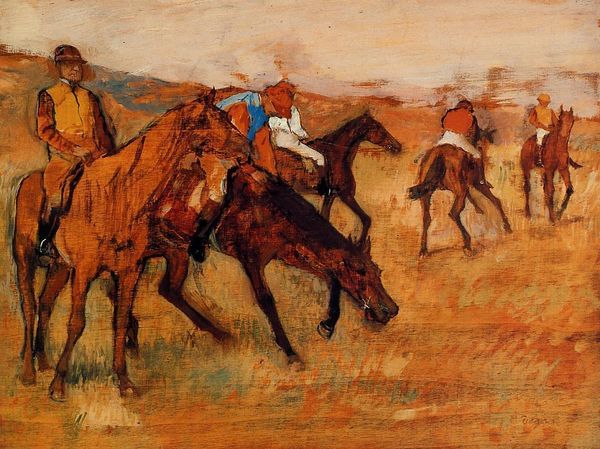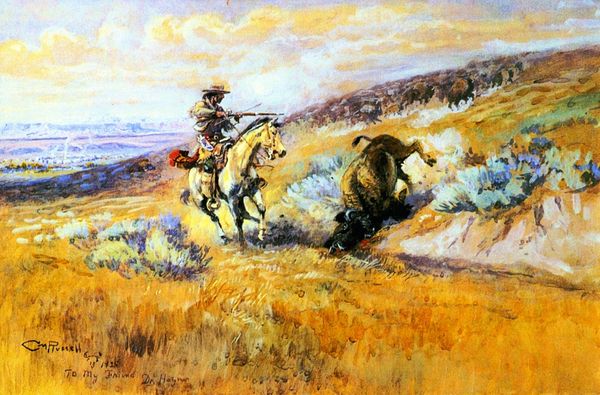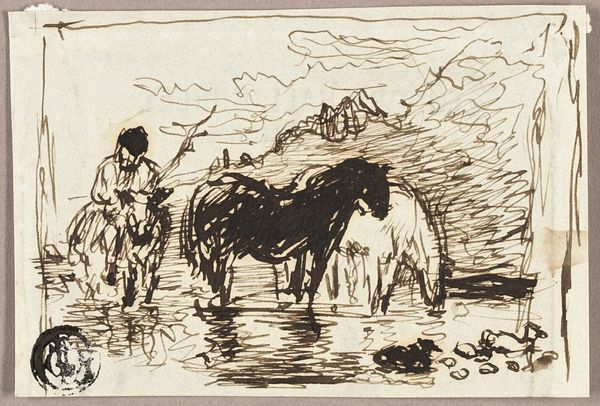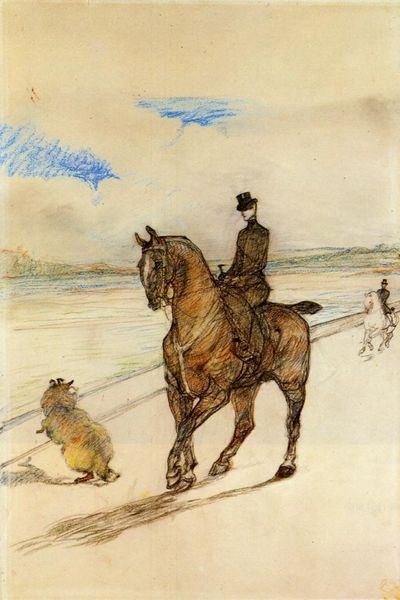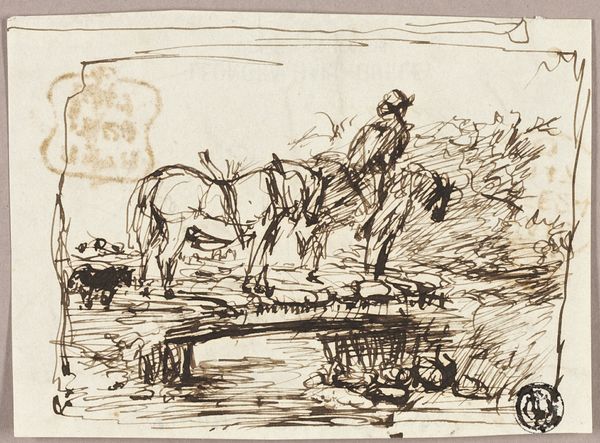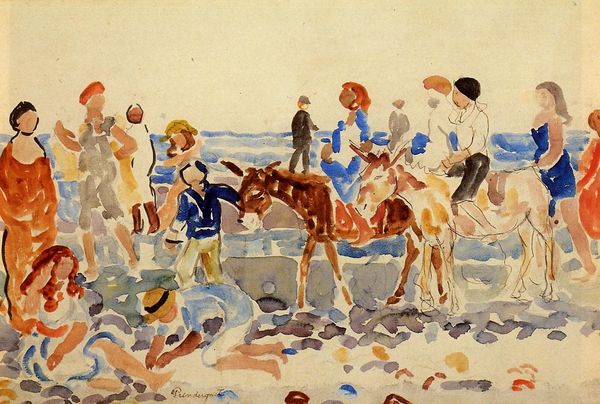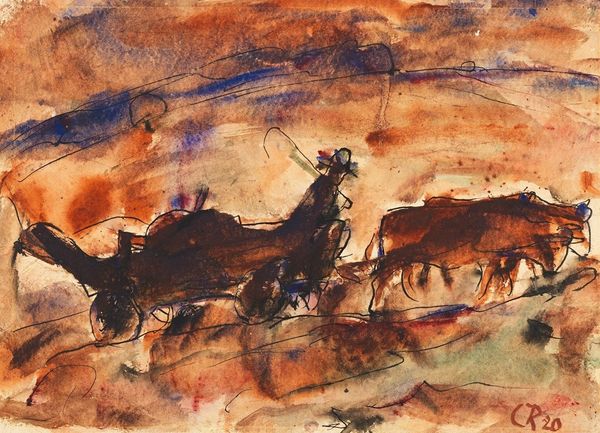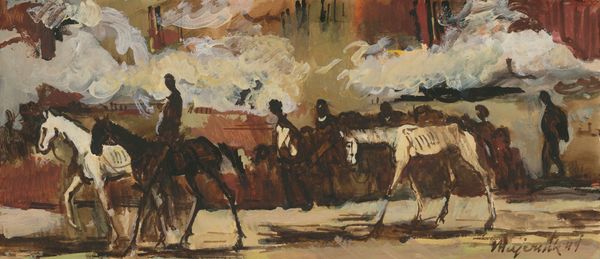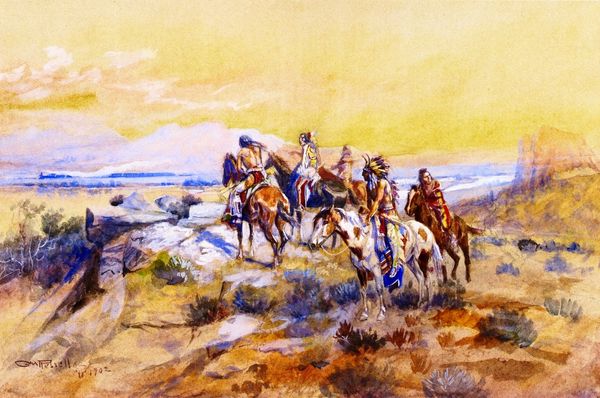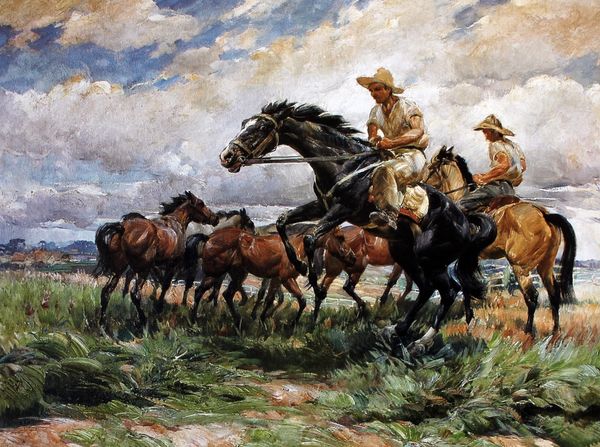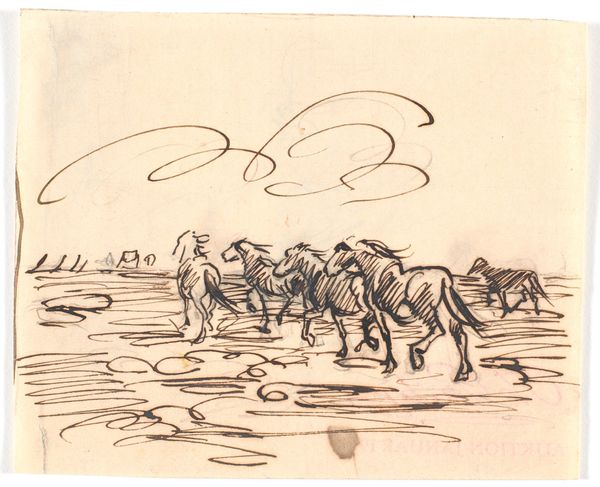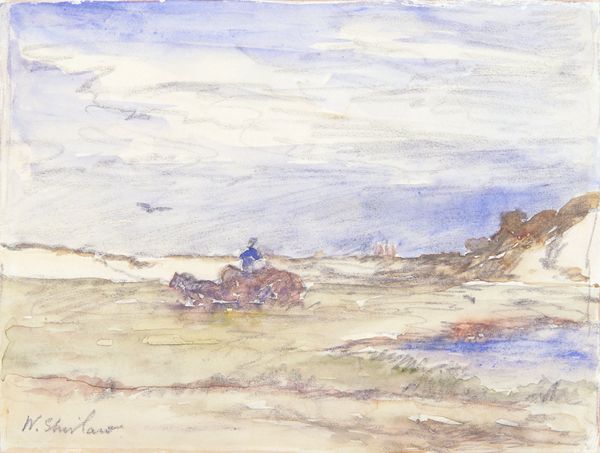
painting
#
narrative-art
#
painting
#
landscape
#
watercolor
Copyright: Public domain
Curator: This watercolor on paper, made in 1903, is titled "Indians Traveling on Travois," and it comes to us from the capable hand of Charles M. Russell. Editor: It’s funny, it strikes me as this blend of dreamy and gritty all at once. Like a mirage shimmering in the harsh light, full of sweat and leather. Curator: I find it's Russell's way of telling stories that pulls me in. You can almost feel the journey, can't you? The way he layers the watercolor suggests not only a landscape but a narrative. Each figure, animal, even the travois, seems heavy with purpose. Editor: Absolutely. It’s easy to romanticize the West, but the detail of the travois reminds you of labor, of survival. These weren't pleasure rides; they were about hauling goods, setting up camp. We see a transformation from pre-colonial nomadic lifestyles where items and tools were relatively lighter. The introduction of the horse from Spanish invaders allowed for more carrying capacity and bigger kills, also resulting in social upheaval and different economic and material conditions. Curator: Yes! It feels deeply respectful, unvarnished, if that makes sense. Though one can certainly argue that this work carries the weight of a non-Native gaze romanticizing Indigenous experience in a way that perhaps Russell was also susceptible to at the time, a real reckoning of its inherent problematics that haunt such art, I think it strives to see with empathetic eyes. And the watercolor technique, itself feels crucial, offering a sense of movement, of constant flux, fitting for a people always on the move. Editor: It's the materials that keep calling me back. Why watercolor? What does its perceived “delicacy” contribute, or perhaps even undercut here when depicting such labor? Watercolor pigments were readily available to field artists documenting expansion and were cheap to move—but beyond their functional use, watercolors give such paintings a sense of fragility, which when combined with Indigenous subject matter, risks associating communities on the land with impermanence, in danger of being erased or whitewashed. Curator: Hmm, interesting... Perhaps a certain vulnerability too. One can nearly taste the sunbaked earth and feel the unending scope of it all! Editor: Maybe. I wonder how the commercialization of such paintings helped continue to advance westward expansion, to sell an aesthetic that aided and abetted further incursions on Indigenous land. But beyond those concerns and caveats, I will say I still do appreciate its visual textures...
Comments
No comments
Be the first to comment and join the conversation on the ultimate creative platform.
